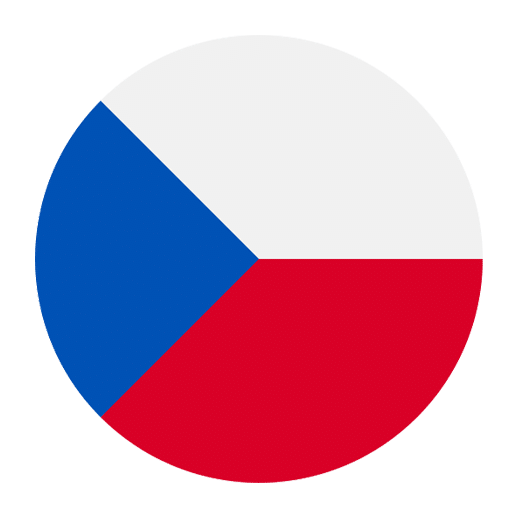Learning a new language involves more than just understanding grammar and vocabulary; it also includes knowing how to describe various aspects of daily life. One such important area is physical activities. Whether you are talking about sports, exercise routines, or simple daily activities, knowing how to describe physical activities in Czech can be quite useful. This article aims to provide English speakers with a comprehensive guide on how to describe physical activities in Czech.
Basic Vocabulary
Before diving into complex sentences, it’s essential to start with some basic vocabulary. Here are some common physical activities translated from English to Czech:
– Running: běhání
– Walking: chůze
– Swimming: plavání
– Cycling: jízda na kole
– Playing Football: hraní fotbalu
– Dancing: tančení
– Hiking: turistika
– Yoga: jóga
– Gymnastics: gymnastika
These words form the foundation upon which you can build more complex sentences. Note that in Czech, the base form of these verbs is usually the infinitive, often ending in -ání or -ení.
Forming Sentences
Once you have a grasp of the basic vocabulary, the next step is to form sentences. Here are some simple sentence structures to help you describe physical activities:
Present Tense
In the present tense, Czech verbs conjugate based on the subject. Here’s a basic structure to follow:
**Subject + Verb + Object**
For example:
– I run every day: Já běhám každý den.
– She swims well: Ona plave dobře.
– We are walking in the park: My jdeme v parku.
Notice how the verb changes to match the subject (I, she, we). This is an essential aspect of Czech grammar that you’ll need to master to describe physical activities accurately.
Past Tense
Describing past events involves using the past tense. Czech verbs in the past tense also change based on the subject and gender. Here’s a basic structure:
**Subject + Past Tense Verb + Object**
For example:
– I ran yesterday: Včera jsem běhal (male) / běhala (female).
– She swam in the lake: Ona plavala v jezeře.
– We walked to school: My jsme šli do školy.
Again, notice how the verb changes not just for the subject but also for the gender of the subject in the past tense.
Future Tense
When talking about future activities, you use the future tense. The structure generally involves adding a future auxiliary verb:
**Subject + Auxiliary Verb + Main Verb + Object**
For example:
– I will run tomorrow: Zítra budu běhat.
– She will swim in the river: Ona bude plavat v řece.
– We will go hiking: My půjdeme na turistiku.
In these sentences, the auxiliary verb “bude” (will) is used to indicate the future tense.
Describing Frequency and Intensity
Often, describing physical activities involves mentioning how frequently or intensely the activity is done. Here are some useful words and phrases:
– Often: často
– Sometimes: někdy
– Rarely: zřídka
– Every day: každý den
– Once a week: jednou týdně
– Twice a month: dvakrát měsíčně
– Hard: tvrdě
– Gently: jemně
You can incorporate these into your sentences as follows:
– I run often: Běhám často.
– She rarely swims: Ona zřídka plave.
– We hike once a week: Chodíme na turistiku jednou týdně.
Expressing Preferences
Sometimes you need to express your preferences or opinions about physical activities. Here are some useful phrases:
– I like: Mám rád (male) / Mám ráda (female)
– I don’t like: Nemám rád (male) / Nemám ráda (female)
– I prefer: Dávám přednost
– I enjoy: Užívám si
Examples:
– I like running: Mám rád běhání. (male) / Mám ráda běhání. (female)
– She doesn’t like swimming: Ona nemá ráda plavání.
– We prefer cycling: Dáváme přednost jízdě na kole.
Advanced Descriptions
To further enrich your ability to describe physical activities in Czech, you can add more details and complexity to your sentences. Here are some advanced structures:
Using Adverbs
Adverbs can provide more detail about how an activity is performed:
– Quickly: rychle
– Slowly: pomalu
– Energetically: energicky
– Carefully: opatrně
Examples:
– He runs quickly: On běhá rychle.
– She dances energetically: Ona tančí energicky.
Combining Activities
Sometimes, people engage in multiple activities. You can describe this using conjunctions like “and” (a) and “or” (nebo).
Examples:
– I run and swim every morning: Každé ráno běhám a plavu.
– She likes dancing or hiking: Má ráda tančení nebo turistiku.
Contextual Usage
Context is crucial in any language. Here are some examples of how you might describe physical activities in different contexts:
Daily Routine
– I start my day by running in the park: Začínám svůj den běháním v parku.
– After work, I go to the gym: Po práci chodím do posilovny.
Hobbies
– My hobby is cycling: Mým koníčkem je jízda na kole.
– She enjoys doing yoga: Užívá si jógu.
Traveling
– When I travel, I like hiking: Když cestuji, rád chodím na turistiku. (male) / ráda chodím na turistiku. (female)
– We usually swim in the sea: Obvykle plaveme v moři.
Practice and Application
To effectively learn how to describe physical activities in Czech, practice is essential. Here are some tips to help you practice:
– **Flashcards:** Create flashcards with the Czech vocabulary on one side and the English translation on the other.
– **Language Exchange:** Find a language partner who speaks Czech and practice describing physical activities.
– **Daily Journaling:** Write a short daily journal in Czech describing what physical activities you did.
– **Watch and Listen:** Watch Czech sports channels or listen to Czech podcasts focused on physical activities to get a sense of how native speakers describe them.
Conclusion
Describing physical activities in Czech is a valuable skill for anyone looking to deepen their understanding of the language. By starting with basic vocabulary, learning to form sentences in different tenses, and incorporating adverbs and preferences, you can effectively describe a wide range of physical activities. Remember, practice is key, so make use of the tips provided to enhance your learning experience. With consistent effort, you’ll find yourself more comfortable and fluent in describing physical activities in Czech. Happy learning!

